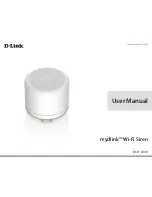
Cisco Catalyst 2820
For an environment that needs high−speed links to the wiring closet for 20 or so users, the Catalyst 2820 is an
ideal solution. This switch is perfect for smaller wiring closets where it is not economical to purchase a
high−end solution such as a Cisco Catalyst 5000 series switch.
The Catalyst 2820 series switch architecture is virtually identical to that of the Cisco Catalyst 1900 series
switches, differing mainly in its height and uplink bays. The switch has two uplink bays that allow for
high−speed uplink options such as Fiber Distributed Data Interface (FDDI), Copper Distributed Data Interface
(CDDI), 100Mbps, and Asynchronous Transfer Mode (ATM) modules.
The 2820 series comes in two models: the Cisco Catalyst 2822 and the Cisco Catalyst 2828. On both
switches, you will find twenty−four 10BaseT Ethernet ports and one 10Mbps attachment unit interface (AUI)
port. All the features listed earlier for the Catalyst 1924 apply to the Catalyst 2822 and the Catalyst 2828, as
shown in Table E.2, with the exception of the number of allowable MAC addresses.
Table E.2: Features available for the Cisco Catalyst 2822 and Catalyst 2828.
Feature
2822
2828
Ports
24
24
Backplane
1Gbps
1Gbps
Processor
80486 CPU
80486 CPU
Flash
1MB
1MB
DRAM
2MB
2MB
Forwarding rate
370 pps
370 pps
Cisco Catalyst 2900
Two quite significantly different architectures are found in the 2900 series of switches: the 2900 series
switches and the XL version of the 2900 series switches. About the only similarity between these series is
their low cost; if you compare the Catalyst 2900 family of switches’ performance and features to other Cisco
Catalyst switches, this series is one of the best values for your money.
The 2900 series includes the 2901, 2902, 2926, and 2948G. These switches use an architecture similar to that
of the Cisco Catalyst 5000 series of switches. This series uses the Set/Clear command−based CLI, allowing
the switch to support advanced features such as ISL.
The XL series was introduced long after Cisco released its prized Catalyst 5000 series of switches, and it
causes great confusion to customers of Cisco resellers because the 2900 XL series has a lower model number.
In most cases, vendors assign higher model numbers to newer, better, and faster models. One of the most
noticeable differences between the 2900 XL series and the 5000 series, which uses a Set/Clear CLI, is that the
XL series uses the true Cisco IOS, which is almost identical to that of Cisco routers. The 2900 XL series is the
wiring closet workhorse for 10/100 auto−negotiation. Auto−negotiation allows the switch to negotiate the
switch port speed and duplex based on the type of traffic being sent to the switch by the sending interface. The
models available in this series are the 2908 XL, 2912 XL, 2916 XL, and the 2924 XL.
The 2900 XL series supports some comprehensive management features including a built−in Hypertext
Transfer Protocol (HTTP) server for the Web−based Cisco Visual Switch Manager, Simple Network
Management Protocol (SNMP), Cisco Discovery Protocol (CDP), CiscoWorks for Switched Internetworks
(CWSI), and embedded agent support for four groups of Remote Monitoring (RMON).
Its security and redundancy features support user−selectable port security, multilevel console security, Cisco
IOS IP access lists, Terminal Access Controller Access Control System Plus () authentication, and
IEEE 802.1D spanning−tree support. Take a look at Table E.3 to see the hardware features of each switch.
360
Summary of Contents for Catalyst 1900 Series
Page 1: ......
















































